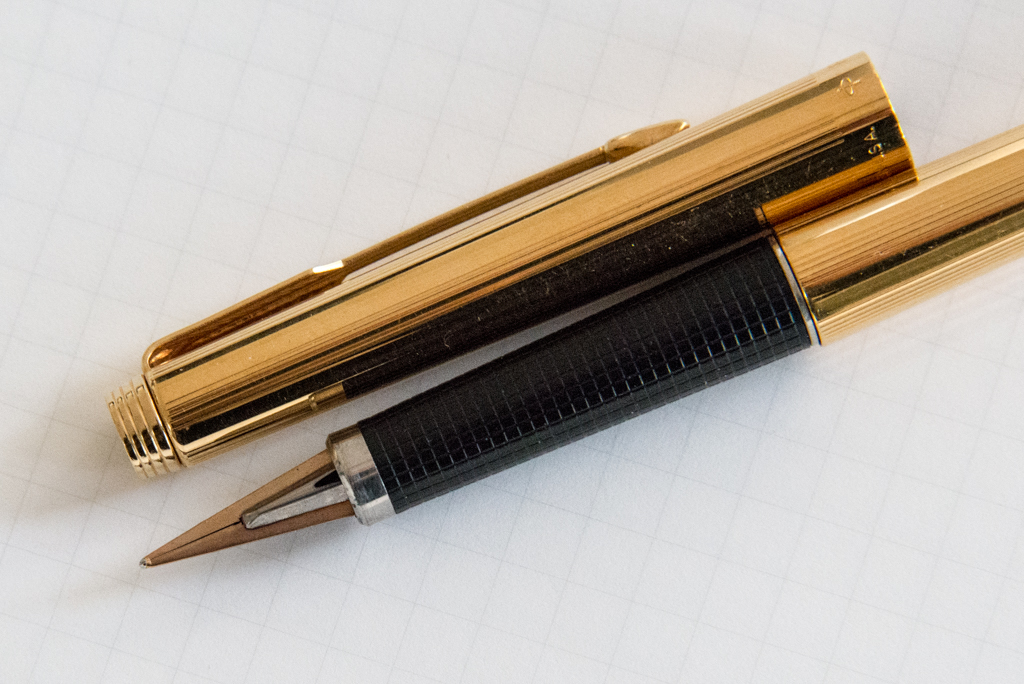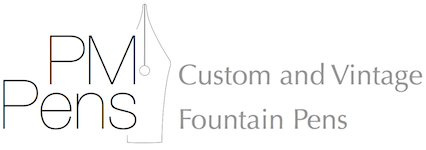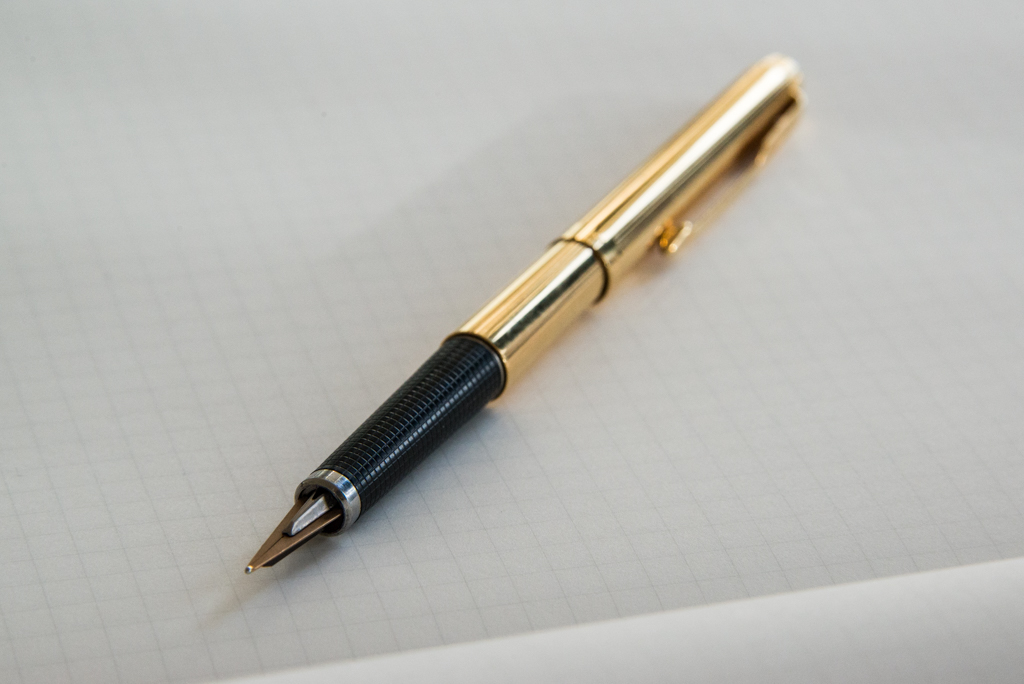Parker 180 Imperial
The Parker 180 was released to the market in 1977, but the company had already trademarked the name back in 1974. The original advertisements from the 70’s stated “One nib. One point. Two ways to write.” This is because the pen is designed to be used “right side up” and “upside down” with two different line widths. This particular pen is an Extra-Fine and a Medium, as is indicated on the black plastic feeder on the underside of the nib, shown below. The dual nature of the pen was the inspiration for its name – since you rotate it 180 degrees to change to the other line width. However, this brilliant marketing statement helps you to forget the fact that almost any fountain pen can be used upside down – and will typically give you a much finer line as a result.

Apparently, there are some 180’s that do not have two different line widths (which seems strange to me). These can be identified by the fact that they have only one letter on the feeder.

Another aspect of this nib design is the stiffness of the nib, resulting from the fact that it is sandwiched between the feeder and the metal reinforcing bar on the top. This means that it was suitable for writing with the same kind of pressure inflicted by persons used to writing with a ballpoint. (So, if you do have to lend your pen to someone, this might be the one to pass across the table.)

This body and cap design of this pen was originally called the “Imperial” model, however that was later renamed to be called the “Milleraies” or “Thousand Lines.” The pattern was available in gold-plated, as shown here, or in other metals such as a silver-plated and a chromed finish.

The 180 came with an aerometric-type filler which can be removed if you prefer to use disposable cartridges.
Note that the 180 is somewhat similar in design to the Parker Classic, which was released later. They should not be confused – there are many sites that have a “Parker 180” for sale that is actually a Classic. The quickest way to tell is to look for the triangular metal reinforcing bar. If it’s not there, it not a 180.
It’s a slender pen, longer, but slimmer than the Wahl Pen No. 4, for example. It can be securely posted, since there is a clutch inside the cap that grabs the backwards-tapered tassie at the end of the barrel. The pen is somewhat back-heavy – however, this is not noticeable when writing with it. In my opinion, part of the reason the pen feels so balanced is due to the long section that allows you to grip the pen as you wish.
Total weight: 19.5 g
Body weight: 12.5 g
Total length (not posted): 123.4 mm
Total length(with cap): 132.7 mm
Barrel max diameter: 9.5 mm
Cap max diameter: 9.5 mm
More info on the 180 can be found at the following links:
Parker Pens Penography: Parker 180
180 vs. Classic identification
Richard Binder’s page on the 180
V2018067

